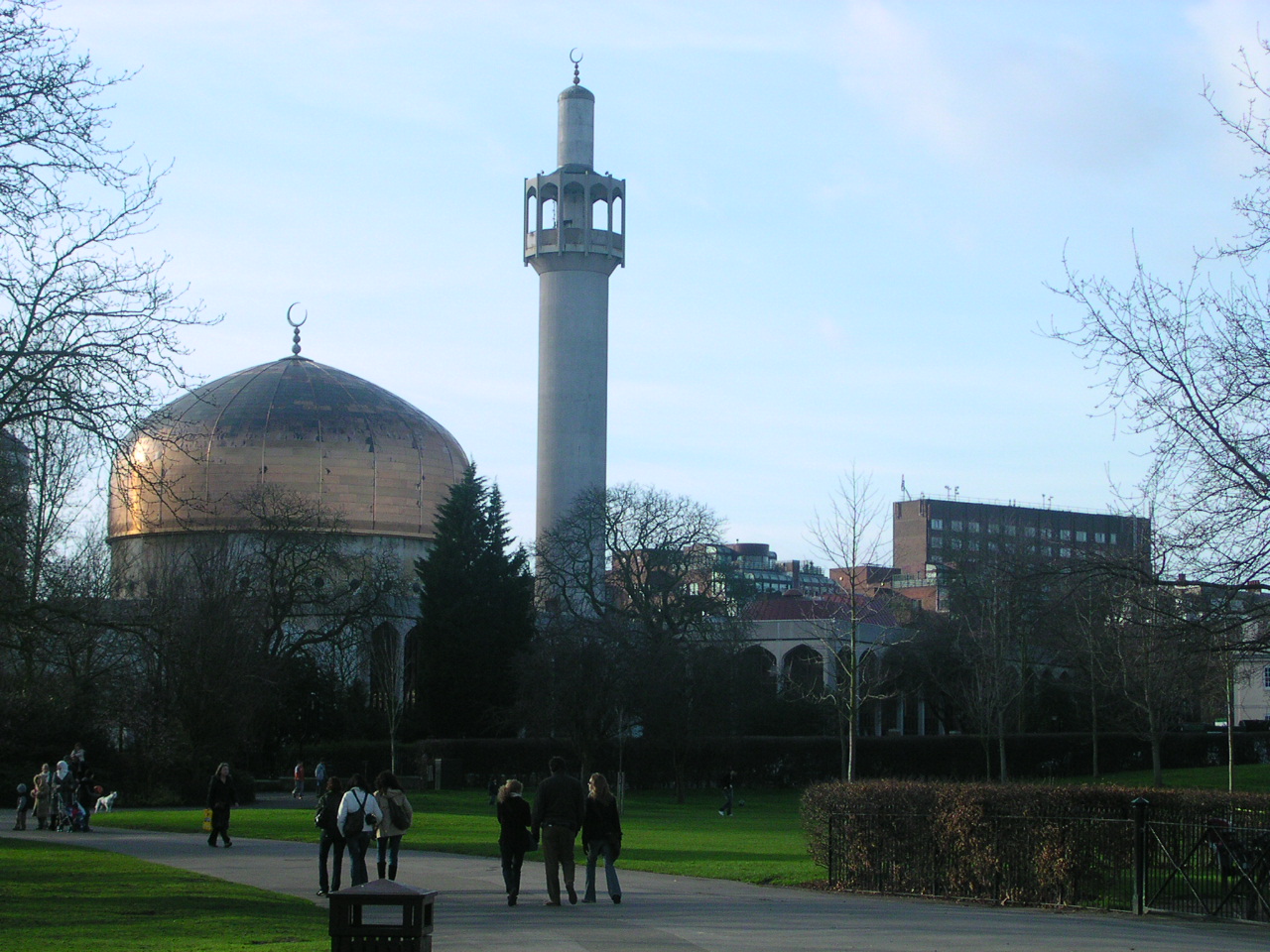Issam Al-Said on:
[Wikipedia]
[Google]
[Amazon]
Issam al-Said (1938-1988) was a distinguished Iraqi painter, print-maker, designer, etcher, architect, philosopher and author who completed several major public buildings in Baghdad and in London.
 * Central Mosque, London, 1976-77
* Islamic Cultural Centre, London, 1976–77
* Aloussi Mosque, Baghdad, 1982–83
* Al-Aboud Mosque, Baghdad, 1984
* Central Mosque, London, 1976-77
* Islamic Cultural Centre, London, 1976–77
* Aloussi Mosque, Baghdad, 1982–83
* Al-Aboud Mosque, Baghdad, 1984
Life and career
Issam al-Said was born in Baghdad in 1938 into an influential family. He was the second son of Iraqi parents, Sabah Nuri al-Said and Esmat Ali Pasha Fahmi (who was of Egyptian ancestry) and the grandson ofNuri al-Said
Nuri Pasha al-Said Al-Qaraghuli CH (; December 1888 – 15 July 1958) was an Iraqi politician and statesman who served eight terms as Prime Minister of Iraq. He served in various key cabinet and governmental positions in Iraq during its Briti ...
Pasha (Iraq's Prime Minister, 1930–58). As an adult, his older brother, Falah, was the personal pilot to King Hussein
Hussein bin Talal (14 November 1935 – 7 February 1999) was King of Jordan from 1952 until his death in 1999. As a member of the Hashemite dynasty, the royal family of Jordan since 1921, Hussein was traditionally considered a 40th-generati ...
. Both his father and grand-father were brutally killed during the 1958 revolution.
He studied architecture at Cambridge University
The University of Cambridge is a Public university, public collegiate university, collegiate research university in Cambridge, England. Founded in 1209, the University of Cambridge is the List of oldest universities in continuous operation, wo ...
, graduating in 1961 and also studied at the Hammersmith College of Art and Design, London in 1962-4. He began preparing for a PhD on the Methodology of Geometric Proportioning in Islamic Architecture at the University of Newcastle-upon-Tyne in 1988, but died in London of a heart attack before he could complete it. The work was published posthumously.
Work
He was a versatile artist who, in addition to major public buildings completed in London and Baghdad, also designed furniture including lamps, carpets, tiles, furniture, etc. From the 1960s, he began incorporating kufi script into his artworks, thereby joining the growing ranks of hurufiyya artists developing this style in the Middle East and North Africa in the 1950s and 60s. His artworks are held in international collections, both private and public, including prestigious art museums such as: TheBritish Museum
The British Museum is a Museum, public museum dedicated to human history, art and culture located in the Bloomsbury area of London. Its permanent collection of eight million works is the largest in the world. It documents the story of human cu ...
, Victoria and Albert Museum
The Victoria and Albert Museum (abbreviated V&A) in London is the world's largest museum of applied arts, decorative arts and design, housing a permanent collection of over 2.8 million objects. It was founded in 1852 and named after Queen ...
(London), Museum of Modern Art
The Museum of Modern Art (MoMA) is an art museum located in Midtown Manhattan, New York City, on 53rd Street (Manhattan), 53rd Street between Fifth Avenue, Fifth and Sixth Avenues. MoMA's collection spans the late 19th century to the present, a ...
(MOMA), New York; National Museum of Modern Art (Baghdad), the National Museum of Modern Art (Amman, Jordan) and Darat al Funun - The Khalid Shoman Foundation (Amman, Jordan).
Select list of architectural works
Select list of paintings
* ''Head of Christ,'' watercolour, pen, ink & oil on paper on board, 25x16cm, c. 1959 * ''Sodom and Gomorrah,'' 1962 * ''Medinat al Hub,'' Oil on canvas 102x153cm 1963 (Inspired byNazik Al-Malaika
Nazik al-Malaika (; 23 August 1923 – 20 June 2007) was an Iraqi poet. Al-Malaika is noted for being among the first Arabic poets to use free verse.
Early life and career
Al-Malaika was born in Baghdad to a cultured family. Her mother Salma ...
's poem Medinat al-Hub)
* ''Geometric Multiples,'' enamel on aluminium, 1979
* '' At the Door,'' made of prints, 1979
* ''Wa la Ghaliba illa Allah,'' 1962-1974
* ''Allah al-Kalima ,'' Mixed media and oil on canvas, 50x50cm, 196
* ''Kufic IV,'' date unknown
* ''Three Women,'' aquatinta etching, date unknown
Publications
* ''Islamic Art and Architecture: The System of Geometric Design,'' 1993 (published posthumously and based on his PhD dissertation) * ''Geometric Concepts in Islamic Art,''World of Islam Festival, London, 1976 (co-authored with A. Parman)Legacy
He is the subject of the book, ''Issam El-Said: Artist and Scholar'' by Samir Chorbachi Published by Issam El-Said Foundation, 1989 (two editions in English and Arabic)Sinclair, S. (ed.), ''Bibliography of Art and Architecture in the Islamic World,'' BRILL, 2012, p.654See also
*Iraqi art
Iraqi art is one of the richest art heritages in world and refers to all works of visual art originating from the geographical region of what is present day Iraq since ancient Mesopotamia, Mesopotamian periods. For centuries, the capital, Baghd ...
* List of Iraqi artists
The following is a list of important artists, including visual arts, poets and musicians, who were born in Iraq, active in Iraq or whose body of work is primarily concerned with Iraqi themes or subject matter.
Note: This article uses Arabic nami ...
* List of mosques in Iraq
This is a list of mosques in Iraq. There are 7,000 Sunni mosques and 3,500 Shia mosques in Iraq as a whole. According to the Office of Waqf and Sunnah in Iraq, in the capital city of Baghdad, there are 912 Jama Masjids that conduct Friday Prayer a ...
References
{{DEFAULTSORT:Said, Issam al 20th-century Iraqi painters Artists from Baghdad Iraqi architects Iraqi calligraphers Iraqi designers Iraqi contemporary artists 1938 births 1988 deaths